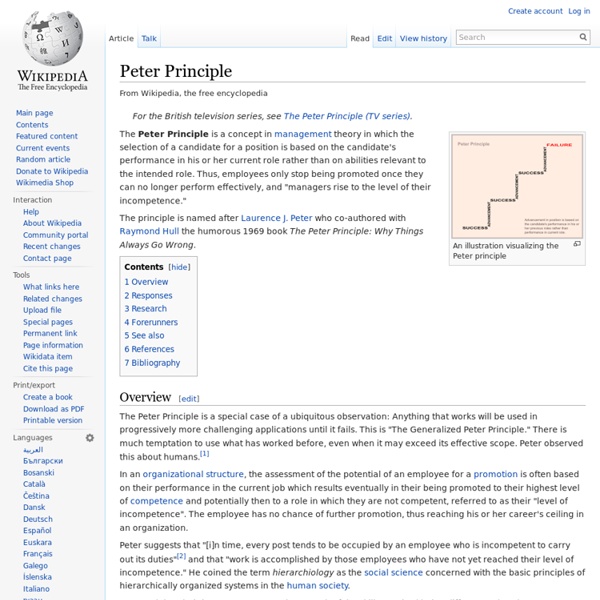Connaître la loi dans l’Éducation nationale
Avant d'aller plus loin, testez vos connaissances... Lisez attentivement chacune des questions suivantes, puis essayez d'y répondre par oui ou par non. Question 1 Les fonctionnaires de l'Éducation nationale sont-ils tenus à l'obligation de réserve ? Question 2: Les fonctionnaires de l'Éducation nationale sont-ils tenus au secret professionnel ? Question 3 Un fonctionnaire de l’Éducation nationale qui, hors de son cadre professionnel, prend connaissance d’un fait de mauvais traitements infligés à un enfant est-il tenu de le signaler ? Question 4 En rentrant chez moi, j’apprends par hasard que mon voisin de palier s’apprête à commettre un crime. Question 5 Question 6 Un fonctionnaire qui, dans le cadre de ses missions, prend connaissance d’un crime ou d’un délit peut-il invoquer le secret professionnel pour ne pas signaler les faits ? Question 7 Question 8 Question 9 Question 10
To get a job, write your story instead of a resume - Quartz
I am 61 years old and I have been doing paid work since I was 16. I’ve been a grocery clerk, camp counselor, film projectionist, sound man, light man, cameraman, freight loader, computer programmer, teacher, operations research analyst, manager, salesman, writer, consultant, and for the last 30 years I’ve been a securities trader and hedge fund manager. Yet I have only once gotten work by answering an ad. Even then I was turned down at first, but it led to a different job six months later after I established a relationship with the hiring manager who had first said no. And I’ve never been asked for a resume until after I received an offer, and then only because HR always needs something to put in their files. I haven’t needed a resume to get work because my resume doesn’t reveal my work. Here are some things I’ve discovered about finding worthwhile work that have helped me, and that might help you. Lead a thoughtful life Learn to think. Get your story straight But in the middle of what?
enseignants: devoir de réserve ?
Les fonctionnaires de l'Éducation nationale sont-ils tenus à l'obligation de réserve ? L'obligation de réserve a été supprimée par la loi du 13 juillet 1983. Elle ne s'applique plus que pour les magistrats (auxquels s'adresse toujours l'article 10 de l'ordonnance n°58-1270 du 22 décembre 1958) ou certains fonctionnaires à l'occasion de circonstances exceptionnelles (le contexte diplomatique par exemple) qui ne concernent pas l'exercice ordinaire des agents de l'Éducation nationale. La loi du 13 juillet 1983 leur reconnaît une totale liberté d'opinion (Art. 6), l'activité politique (Art. 7) et syndicale (Art. 8) et le droit de grève (Art. 10) que certains ministres autoritaires voudraient bien voir disparaître. tribune libre du journal Le Monde daté du 31 janvier 2008. Anicet Lepors, qui était à cette époque ministre de la Fonction Publique, donne son analyse de l'obligation de réserve dans une Loi n° 78-753 du 17 juillet 1978 consultables par tout le monde).
MBA School Profiles
Admissions and career consulting services worldwide since 1996 Affiliated With the Best More Sharing ServicesShare Share on facebook Share on twitter Share on email Client Testimonials "I got in!!! S., Washington "Admits to Wharton and Columbia. K., New Jersey "I could not have done this without you. J., Canada "Heard from INSEAD! C., India Business School Profiles Top Tier is our Specialty Which of the following business schools is your top choice? Since 1996, The MBA Exchange has helped serious applicants gain admission to more than 70 graduate programs worldwide. New!
Certifiés : notation pédagogique
La notation pédagogique fait partie, avec la notation administrative, de la double évaluation annuelle de l’enseignant certifié qui prend en compte et reconnaît la spécificité de notre métier. (Article 30 du décret n°72-581 du 4 juillet 1972 relatif au statut particulier des professeurs certifiés.) La note pédagogique (sur 60) est attribuée après une visite d’inspection effectuée, dans la plupart des cas, par un IPR. La note est communiquée par arrêté au plus tard dans l’année scolaire qui suit celle de l’inspection. Cette note pédagogique ne peut être contestée mais il est possible d’adresser toute remarque à son sujet à l’inspecteur qui a effectué la visite ainsi qu’au doyen de l’inspection générale de sa discipline. On peut agir de même au sujet du rapport d’inspection rédigé à la suite de cette même visite. Le corps des professeurs certifiés étant un corps à gestion déconcentrée depuis 1989, les procédures de notation et d’avancement d’échelon sont elles-mêmes déconcentrées.
Communication Charts Around The World



